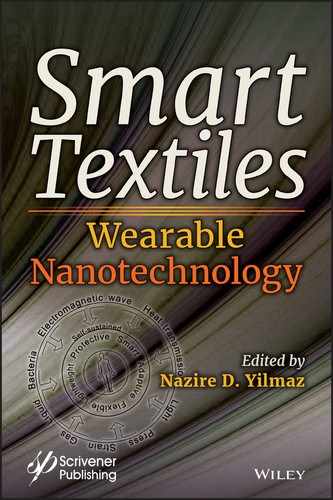Book Description
Smart Textiles: Wearable Nanotechnology provides a comprehensive presentation of recent advancements in the area of smart nanotextiles giving specific importance to materials and production processes. Different materials, production routes, performance characteristics, application areas and functionalization mechanisms are covered. The book provides a guideline to students, researchers, academicians and technologists who seek novel solutions in the related area by including groundbreaking advancements in different aspects of the diverse smart nanotextiles fields. This ground-breaking book is expected to spark an inspiration to allow future progress in smart nanotextiles research.
The diversity of the topics, as well as the expert subject-matter contributors from all over the world representing various disciplines, ensure comprehensiveness and a broad understanding of smart nanotextiles.
